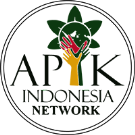KERAGAMAN JENIS TANAMAN PADA SISTEM PENGELOLAAN HUTAN KEMASYARAKATAN
DOI:
10.29303/jbl.v3i1.375Published:
2020-03-02Issue:
Vol. 3 No. 1 (2020)Keywords:
agroforestry, forest management, intolerant plant, tolerant plantArticles
Downloads
How to Cite
Downloads
Metrics
Abstract
Community Forestry is a government policy that aims to reduce the rate of deforestation by involving local communities through optimal, fair, and sustainable use of forest resources while maintaining the preservation of forest and environmental functions. The diversity of plant species is one indicator of the preservation of forest and environmental functions. This study aims to determine the types of plants and cropping patterns carried out related to the characteristics of group members after obtaining Community Forest Utilization Permits. The study was conducted in December 2018. Data collection was carried out by structured interviews with members of the Sinar Harapan farmer group and direct observation in the field. Data is tabulated and analyzed descriptively. The results showed that the planting pattern used in Sinar Harapan group was a simple agroforestry pattern consisting of 8 types of intolerant plants namely avocado (Persea americana), petai (Parkia speciosa), areca nut (catechu area), durian (Durio zibethinus), jengkol (Archidendrom pauciflorum), bananas (Musaceae), candlenuts (Aleurites moluccanus), mahogany (Swietenia mahagoni) and 7 types of tolerant plants consisting of lemongrass (Cymbopogon citratus), cloves (Syzygium aromaticum), jaling (Archidendron bubalinum), chili (Capsicum frutescens) ), pepper (Piper Nigrum), nutmeg (Myristica fragrans), and coffee (Coffea). The diversity of plant species is influenced by farmer characteristics such as age, type of work, activity in the organization, land area, and the number of working days of farmers.
References
Achmad, B. & Diniyati, D. (2015). Keragaman jenis tanaman dan pengelolaannya pada hutan rakyat di Kabupaten Ciamis, Jawa Barat. Pros. Semnas Masy Indn, 1(3), 460-465.
Arifandy, M.I & Sihaloho, M. (2015). Efektivitas pengelolaan hutan bersama masyarakat sebagai resolusi konflik sumber daya hutan. Jurnal Sosiologi Pedesaan, 3(2), 147-158.
Badan Pusat Statistika. (2018). Luas Panen dan Produksi Beras di Indonesia 2018. Diunduh dari https://www.bps.go.id/.../2018/.../luas-panen-dan-produksi-beras.
Badan Pusat Statistika. (2018). Statistika Indonesia 2018. Diunduh dari https://www.bps.go.id/.../2018/07/03/../statistik-indonesia-2018.
Evrizal, R., Sugiatno., Prasmatiwi F.E. & Nurmayasari, I. (2016). Shade tree species diversity and coffee productivity in Sumberjaya, West Lampung, Indonesia. Jurnal Biodiversitas, 17(1), 234-240.
Kristin, Y., Qurniati, R., & kaskoyo, H. (2018). Interaksi Masyarakat sekitar Hutan terhadap Pemanfaatan Lahan Taman Hutan Raya Wan Abdul Rachman. Jurnal Sylva Lestari, 6(3):1-8.
Manyamsari, I. & Mujiburrahmad. (2014). Karakteristik petani dan hubungannya dengan kompetensi petani lahan sempit (kasus : di Desa Sinar Sari Kecamatan Dramaga Kab. Bogor Jawa Barat). Jurnal Agrisep, 15(2), 58-74.
Mayrowani, H. & Ashari. (2011). Pengembangan agroforestry untuk mendukung ketahanan pangan dan pemberdayaan petani sekitar. Forum penelitian agro ekonomi, 29(2), 83-98.
Pratiwi, Y.Y., Bintoro, A. & Riniarti, M. (2013). Komposisi dan Struktur Tegakan Zona Pemanfaatan Terbatas SPTN 1 Way Kanan, Taman Nasional Way Kambas. Makalah disajikan dalam Seminar Nasional Sains dan Teknologi V, Lembaga Penelitian Universitas Lampung, Lampung, 19-20 November.
Robiyan, R., Hasanuddin, T. & Yanfika, H. (2014). Persepsi petani terhadap program sl-pht dalam meningkatkan produktivitas dan pendapatan usahatani kakao (studi kasus petani kakaodi desa sukoharjo 1 kecamatan sukoharjo kabupaten pringsewu). Jurnal Ilmu-Ilmu Agribisnis, 2(2), 301-308.
Ruchyansyah, Y., Wulandari, C. & Riniarti, M. (2018). Pengaruh pola budidaya pada hutan kemasyarakatan di areal kelola KPH VIII Batutegi terhadap pendapatan petani dan kesuburan tanah. Jurnal Sylva Lestari, 6(1), 99-108.
Salampessy, M.L., Nugroho, B. & Purnomo, H. (2012). Hubungan karakteristik responden dengan partisipasi masyarakat dalam kegiatan pengelolaan hutan lindung Gunung Nona di Kota Ambon Propinsi Maluku. Jurnal Penelitian Sosial dan Ekonomi Kehutanan, 9(3), 149-159.
Sanjaya, R., Wulandari, C. & Herwanti, S. (2017). Evaluasi pengelolaan Hutan Kemasyarakatan (Hkm) pada Gabungan Kelompok Tani Rukun Lestari Sejahtera di Desa Sindang Pagar Kecamatan Sumberjaya Kabupaten Lampung Barat. Jurnal Sylva Lestari, 5(2), 30-42.
Sudhartono, A., Basuni, S., Bahruni. & Suharjit, D. (2011). Pola akses petani penggarap lahan di kawasan perluasan Taman Nasional Gunung Gede Pangrango Jawa Barat. Jurnal Ilmiah Bidang Konservasi Sumberdaya Alam Hayati dan Lingkungan, 16(3), 122-132.
Tjatjo., N.T., Basir, M. & Umar, H. (2015). Karakteristik pola agroforestri masyarakat di Sekitar Hutan Desa Namo Kecamatan Kulawi Kabupaten Sigi. Jurnal Sains dan Teknologi Tadulako, 4(3), 55-64.
Winarni, S., Yuwono, S. B. & Herwanti, S. (2016). Struktur pendapatan, tingkat kesejahteraan dan faktor produksi agroforestri kopi pada Kesatuan Pengelolaan Hutan Lindung Batutegi (studi di Gabungan Kelompok Tani Karya Tani Mandiri). Jurnal Sylva Lestari, 4(1), 1-10.
Author Biographies
Destia Novasari, Department of Forestry, Agriculture Faculty, University of Lampung
Rommy Qurniati, Department of Forestry, Agriculture Faculty, University of Lampung
Duryat Duryat, Department of Forestry, Agriculture Faculty, University of Lampung
License
The Authors submitting a manuscript has understood that if accepted for publication on Jurnal Belantara, the copyright of the article shall be assigned to Jurnal Belantara of the Forest Study Program University of Mataram as the publisher of the journal. Copyright encompasses rights to reproduce and deliver the article in all forms and media, including reprints, photographs, microfilms, and any other similar reproductions, as well as translations.
Jurnal Belantara of the Forest Study Program University of Mataram and the Editors make every effort to ensure that no wrong or misleading data, opinions, or statements be published in the journal. In any way, the contents of the articles and advertisements published in Jurnal Belantara are the sole responsibility of their respective authors and advertisers.
We strongly encourage that manuscripts be submitted to the online journal system in http://belantara.unram.ac.id/index.php/JBL/index. Authors are required to create an account and submit the manuscripts online. For submission inquiries, please follow the submission instructions on the website. If the author has any problems with the online submission, please contact Editorial Office at the following email: [email protected]
Contributors are responsible for obtaining permission to reproduce any materials, including photographs and illustrations, for which they do not hold the copyright and for ensuring that the appropriate acknowledgments are included in the manuscript.
Users of this website will be licensed to use materials from this website following the Creative Commons Attribution 4.0 International License. No fees charged. Please use the materials accordingly.











